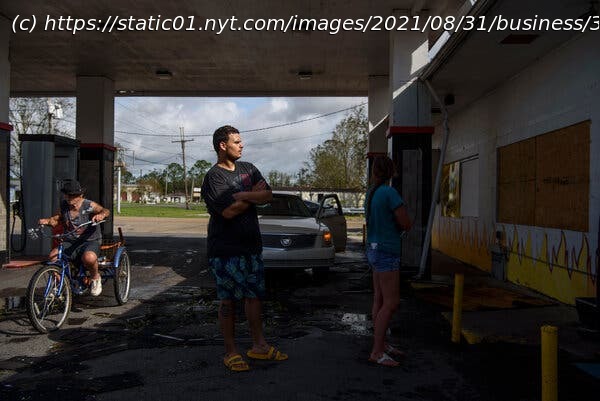Shortages in construction materials are likely to delay the efforts to rebuild in the aftermath of the devastating storm.
In normal times, the devastation of a massive hurricane like Ida tends to be followed by an aggressive rebuilding effort, as carpenters, roofers and other skilled workers descend on affected communities to repair the damage. These are not normal times. With the global supply chain besieged by trouble — extreme shipping delays, persistent product shortages and soaring costs — construction teams will likely struggle to secure needed goods. At the same time, the hurricane’s damage to critical industries in the Gulf Coast areas and the urgent need to rebuild are expected to cascade through the country’s already strained shipping infrastructure. “The supply was already terrible,” said Eric Byer, the president of the National Association of Chemical Distributors, a trade association representing 400 companies that make and sell raw materials used in a vast array of industries — from construction to pharmaceuticals. “Now, it’s going to be worse.” For months, a surge of trade from Asia to the United States has exhausted the supply of shipping containers, forcing buyers to pay 10 times the usual rate on popular routes like Shanghai to Los Angeles. As dockworkers have contracted Covid or have landed in quarantine, loading and unloading at ports has been constrained. The pandemic has sidelined truck drivers, limiting the availability of vehicles that can carry products from ports to warehouses to customers. Hurricane Ida will almost certainly make this situation worse, as available trucks are diverted en masse toward affected communities to deliver relief supplies. No one questions the merits of this course, but it will leave even fewer trucks available to carry goods everywhere else, intensifying already-profound shortages. “The domestic trucking situation has been bad for some time, and the hurricane will add to that,” said Megan Gluth-Bohan, the chief executive of TRInternational, an importer and distributor of chemicals just outside Seattle. “You’re going to see more logjams at the ports.” Her company relies on a supplier in Taiwan for hydrocarbon resins, selling them to American manufacturers that make paints, varnishes and other coatings. She brings in chemicals from Thailand that are included in industrial cleaning products and imports so-called glycols that are used in food products, makeup, and industrial coatings. “These are the raw materials that make everything,” Ms. Gluth-Bohan said. Ms. Gluth-Bohan was still assessing the impact of Ida on her industry, but it seemed obvious that the rebuilding effort would face unique challenges as the availability needed supplies becomes even tighter. “It’s going to have a significant impact,” she said. “Companies that make coatings, paint, shingles or treated lumber — a lot of these companies are going to have to slow down.” Part of the impact is a result of where the storm landed. The Gulf of Mexico is home to refineries and plants that make all manner of industrial chemicals — a fact brought home last winter, when an intense freeze knocked factories out of commission, yielding product shortages that still endure. The plastics industry was girding for another spike in prices that were already record high. The Royale Group, which manufactures and distributes chemicals from its base near Wilmington, Del., buys only a small percentage of its products from plants on the Gulf of Mexico. But that is no comfort, said the company’s chief executive, John Logue. The Great Supply Disruption has illustrated time and again that shortages of a single ingredient can be enough to halt production of many items.






